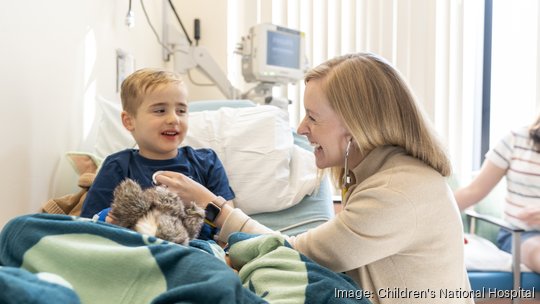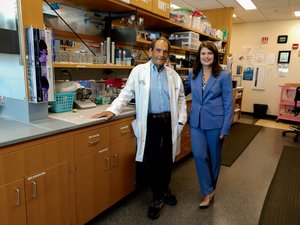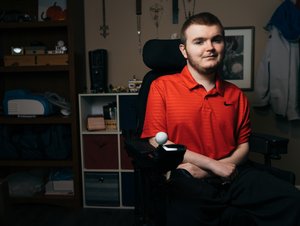
On Wednesday, a 5-year-old boy in Washington, D.C., received the first infusion with Elevidys, a gene therapy invented at Nationwide Children's Hospital for Duchenne muscular dystrophy, the most common and aggressive form.
Sarepta Therapeutics Inc., which licensed the technology from the Columbus pediatric hospital and completed the development to bring it to market, has set a list price of $3.2 million.
Since 2017, the FDA has approved just six therapies that use a modified virus to deliver a corrected copy of a gene in a one-time treatment. Two were invented at Children’s, as I reported in this week's Columbus Business First cover story.
All six are among the most expensive pharmaceuticals ever approved. Elevidys is not the top: The most expensive is Hemgenix, approved last November to treat a form of hemophilia. The therapy by CSL Behring and UniQure is listed at $3.5 million. Zolgensma, the Children's-invented treatment for spinal muscular atrophy, was approved in 2019, it held the title at $2.1 million.
A lot goes into those decisions to set the price for extending a life.
The FDA approved Elevidys in late June. The screening process takes several weeks – some patients are ineligible if they have a particular type of mutation or immune reactions to the viral carrier.
Sarepta (Nasdaq: SRPT) isn't expecting enough treatments to generate much revenue this year, the Boston Business Journal reported. The company is based in suburban Boston, but its main R&D lab is the Easton area in Columbus.
The authorization is narrower than Sarepta sought: only for 4- and 5-year-old Duchenne patients who still can walk.
Boys with Duchenne, which almost exclusively affects males, have been treated with the therapy in clinical trials over the past six years, but 5-year-old Hiram was the first to receive the approved on-the-market product, according to a release. He was treated at Children's National Hospital in D.C. on the eve of his 6th birthday.
“The approval of Elevidys opens a new door for young patients with DMD and their families,” Dr. Sarah Wright, a neuromuscular neurologist at Children’s National, said in the release. “This disease has had limited targeted treatments to date which can help alter the trajectory.”
Setting an economic value on years of life gained
The list price is "not the actual price," Sarepta CEO Doug Ingram said in a June call with analysts, the Boston Business Journal reported. Most patients with Duchenne are covered by Medicaid, which has statutory prescription discounts. On average he estimated the treatment would be discounted by 20%.
Commercial insurers have started rolling out their policies for allowing coverage.
Duchenne affects 1 in 5,000 boys – meaning about 1 in 2,500 births. Only a handful of girls get the condition because the gene is on the X chromosome, some women are carriers with mild symptoms.
On average, Duchenne patients lose the ability to walk by age 12 and to lift a hand to mouth by age 20. The median age of death is 28, usually from heart failure.
The only treatments so far were corticosteroids to mitigate symptoms – also pioneered at Nationwide Children's.
Lifetime medical costs using the previous standard of care totaled about $1.1 million until premature death, according to a cost-benefit analysis by Sarepta, Children's and consultants that was published in the Journal of Market Access & Health Policy.
The analysis calculated the economic value for preserved mobility and years of life in a range of $5 million to $13 million for patients and families. The estimate is not a measure of the company's ability to recoup its costs.
Boys treated at age 5 at Children's during clinical trials are as old as 11 now. They ride bikes and give little siblings piggyback rides. Under the normal course of Duchenne, they would have lost the ability to stand unassisted for 30 seconds at age 10.
The two-year state budget that started July 1 makes Ohio the first state to add Duchenne to the required genetic screening of newborns – so about 12 babies a year in Ohio could be diagnosed and recommended for the treatment, according to an MD nonprofit. In February a federal advisory committee voted against including Duchenne on the national list of required infant screenings.
What Sarepta spent and made so far on the treatment
In the June call Ingram declined to project annual sales for Elevidys, the Boston paper reported. Earlier the company had projected as much as $4 billion sales, but that would have been for approval for a larger patient population.
Sarepta is conducting studies to seek expanding FDA approval to all ages.
Sarepta spent $1.1 billion on research and development the past four years for the Elevidys technology, according to annual reports.
The company also received an upfront $1.2 billion payment from the pharmaceutical giant Roche for the rights to the treatment outside of the U.S., according to regulatory filings.
In the first six months of this year, Sarepta spent $30 million on sales and administrative expenses for Elevidys alone and $5.4 million on contract R&D toward the launch, according to the latest quarterly report this week.
Upon FDA approval in June, it paid Nationwide Children's a $10 million milestone payment under the 2016 license, the report said. The hospital's royalties will be a low single digit percentage.
Sarepta licenses several other therapy candidates invented at Children's, directly and through its acquisition of spinoff Myonexus Therapeutics, and will work to get more to market.







